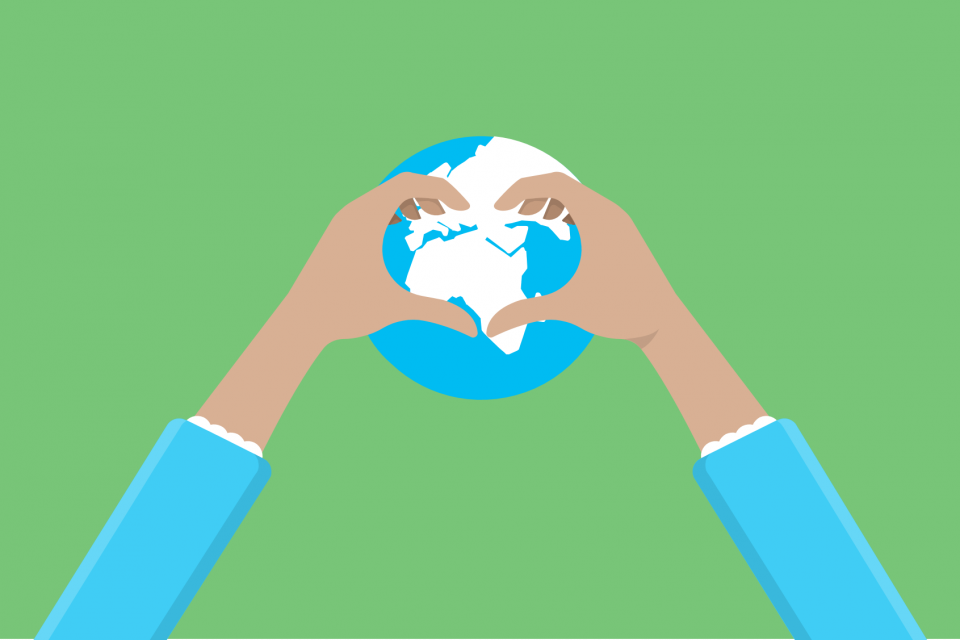All around the globe, people are facing the question of how to grow and thrive with fewer resources. Urban population growth is a major factor, as it’s estimated that by 2030 almost 60 percent of our global population will live in cities. This urban migration is felt even more acutely in Europe, where more than 80 percent of us are predicted to live in towns by 2050.
We need resources to support this growth, and that can only come from a healthy planet. By accelerating the pace of technological innovation, and democratising the benefits of the cloud, people can better adapt and thrive in this resource-constrained world.
In the past, industrial revolution has not prioritised the health of people or our planet. The costs and benefits of these transformations were unevenly distributed across communities and countries. Today’s revolution is different. The “Fourth Industrial Revolution”, as it’s been called, offers greater information and insight than ever before. We are discovering new ways to use technology to reduce greenhouse gas emissions and manage resource consumption, in a way that is good for the economy, good for communities and good for the environment.
Building greener grids
 A growing population means increased demand on our transport systems, healthcare services, and utilities. To tackle this, governments and municipalities are starting to adopt “Smart City” technology that will make our urban areas safer, healthier, and better places to live. But stronger underlying infrastructure is required to make these new services possible.
A growing population means increased demand on our transport systems, healthcare services, and utilities. To tackle this, governments and municipalities are starting to adopt “Smart City” technology that will make our urban areas safer, healthier, and better places to live. But stronger underlying infrastructure is required to make these new services possible.
In Holland, utilities provider Energie Koplopers has partnered with the city of Herrhugowaard to launch a smart grid project, the kind of grid that will power cities of the future. 200 households have been equipped with renewable energy sources, including smart meters and smart thermostats, hooked up to a smart grid running on Azure, Microsoft’s cloud platform.
Houses generate their own energy through these renewable sources, which is then sent back to the grid for distribution among the community. The grid itself combines the Internet of Things (IoT), Big Data, and Machine Learning technology into one system, allowing Energie Koplopers to redirect energy bi-directionally, to wherever it’s most needed, in real time. No longer will energy be a one-way exchange from the supplier, out. Technology will enable everyone to contribute to a smarter and greener energy flow.
The potential for the trial is huge. In the future, all households, offices, cars, industrial facilities, and other Smart City services will need to be able to use and contribute to a flexible smart grid, to ensure everyone has the power they need, when they need it.
Growing greener buildings

As well as managing our resources on a macro or city-wide level, we must also ensure every big building can operate in an environmentally friendly manner. Stockrose is a property management company based in Sweden, with around 250 buildings and 10,000 apartments, which they have converted into smart, sustainable buildings.
Using Microsoft Azure IoT Hub, a secure platform for connecting IoT devices, Stockrose can monitor energy consumption and hot water usage using sensors installed in every home. All information is shared with tenants’ permission, and to their benefit. Tenants who use less energy in Stockrose buildings pay less in rent – a simple way for technology to motivate individuals to reduce their environmental footprint.
“Sustainability is not just a buzzword,” says Richard Lind, Chief Executive Officer at Stockrose. “It’s a big promise, but it’s also a win-win for a number of stakeholders. Heat, water, and energy in any given building today is 34 percent of the cost of operating the building. It’s certainly a win for property owners, who can lower their operational costs.”
Living greener lives

Zooming further into the scale of even a single room, the technology exists today that can improve our very immediate environment and quality of life. Approximately 467,000 Europeans die prematurely from air pollution every year (European Environment Agency). As we spend more time in office buildings, it’s vital for businesses to understand the significance of clean air even indoors.
In Italy, biotechnology company U-Earth has developed freestanding air purification units that capture and destroy contaminants. Using Microsoft Azure to analyse data in real-time, U-Earth has launched the “Pure Air Zone” initiative that offers organisations air quality detection and purification. Their goal is to raise awareness and make Pure Air Zones a standard like Wi-Fi or tap water – improving the quality of life and health for all – room by room.
A greener tomorrow
As technology changes the way we live our lives, it will continue to have a profound impact on the way we treat our environment. These are just a few of the many projects that are using Azure to better manage resources and improve sustainability.
As these projects show, technology is no longer at odds with our planet. As individuals, businesses, and communities, we can use these technologies to transform our societies and become greener, more global citizens. This future isn’t just better for the planet, it’s better for us all.




